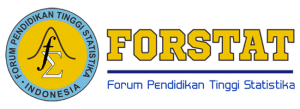Simulasi Numerik Model Matematika Arus Lalu Lintas Berbasis Fungsi Velositas Underwood
(1) Ilmu Aktuaria, Fakultas Matematika dan Ilmu Pengetahuan Alam, Universitas Muhammadiyah Bulukumba
(2) Ilmu Aktuaria, Fakultas Matematika dan Ilmu Pengetahuan Alam, Universitas Muhammadiyah Bulukumba
(3) Ilmu Aktuaria, Fakultas Matematika dan Ilmu Pengetahuan Alam, Universitas Muhammadiyah Bulukumba
(4) Ilmu Aktuaria, Fakultas Matematika dan Ilmu Pengetahuan Alam, Universitas Muhammadiyah Bulukumba
(*) Corresponding Author
DOI: https://doi.org/10.35580/jmathcos.v4i1.20445
Abstract
Abstrak.Model matematika arus lalu lintas pertama kali dikembangkan oleh Lighthill, Whitham dan Richards pada tahun 1956 yang dikenal dengan model (LWR). Dalam model LWR, fungsi kecepatan adalah unsur yang terpenting. Dalam makalah ini digunakan fungsi kecepatan underwood karena memiliki tingkat kesesuaian yang terbaik dibadingkan dengan fungsi kecepatan lainnya. Metode beda hingga implisit digunakan untuk menemukan solusi numerik model LWR dengan model kecepatan Underwood. Konvergensi metode beda hingga implisit dibuktikan dengan menggunakan teorema Ekuivalensi Lax. Simulasi numerik jalan raya satu lajur sepanjang 10 km dilakukan selama 1 jam menggunakan metode beda hingga implisit berdasarkan data awal dan batas yang dibuat secara artifisial. Simulasi numerik dilakukan dengan dua parameter berbeda. Hasil eksperimen menujukkan bahwa semakin tinggi rata-rata kepadatan kendaraan pada suatu laju mengakibatkan rata-rata kecepatan kendaraan akan berkurang.
Kata kunci: Metode Beda Hingga Implisit, Model LWR, Arus Lalu Lintas, Fungsi Felositas Underwood, Simulasi Numerik.
Kata kunci : Abstract. Mathematical traffic flow model was first developed by Lighthill, Whitham and Richards in 1956, known as (LWR) model. In LWR model, velocity function was most important. In this paper, Underwood velocity function was used. Implicit finite difference method used to found the numerical solution of LWR model with Underwood velocity model. Convergence the implicit finite difference method proved using the Lax equivalence theorem. The numerical simulation of 10 km highway of single lane was performed for 1 hours using the implicit finite difference method based on artificially generated initial and boundary data. Numerical simulation performed with two different parameters. An experimental result for the stability condition of the numerical scheme was also presented. Density, velocity, and fluks for 1 hours was experimental result of numerical simulation.
Keywords: Implicit finite difference method, Lax equivalence theorem, LWR model, Traffic flow, Under-wood velocity Function, Numerical simulation.
Full Text:
PDFReferences
Ardekani, S.A., Mostafa,G., Shiva, M. (2011). Macroscopic Speed-Flow Models For Characterization Of Freeway And Managed Lanes. Publicat de Universitatea Tehnică.
Kabir,M.H., Gani,M.O., Andallah , L.S. (2010). Numerical simulation of a mathematical traffic flow model based on a nonlinear velocity-density function. Journal of Bangladesh Academy of Sciences, 34. 15-22.
Kiselev, A.B., Kokoreva, A.V., Nikitin,V.E., & Smirnov,N.N. (2004). Mathematical modelling of traffic flows on controlled roads. Journal of Applied Mathematics and Mechanics, 68. 933-939.
Lighthil, M.J., Witham, G.B. (1955). On Kinematic Waves: I: Flow Movement in Long Rivers, II: A Theory of Traffic Flow on Long Crowded Roads. – In: Proceedings of the Royal Society: A229, London.
Mazare, P.E., Claudel, C.G., Bayen, A.M. (2005). Analytical and grid-free solutions to the Lighthill-Whitham-Richards traffic flow model. Journal of Applied Mathematics and Mechanics, 23. 645-653.
Richard, P.I. (1956). Shock Waves on the Highway. – Operations Research, 4. 42-57.
Stoilova, V., Nikolov, E., Nikolova,N. (2013). Analytical Deriving of Second Order Model of Payne from First Order Lighthil Whitham-Richards Model. Cybernetics And Information Technologies, 13(4).
Strikwerda, J.C. (1989). Finite difference scheme and partial differential Equation (first edition). London (GB): Chapman & Hall
Sultana, N., Parvin, M., Sarker, R., Andallah, L.S. (2013). Simulaion of traffic flow model with traffic controller boundary. International Journal of Science and Engeenering, 5(1).
Thomas, Tutert. (2013). An empirical model for trip distribution of commuters in the netherlands: transferability in time and space reconsidered. Journal of transport geography, 26. 158-165.
Article Metrics
Abstract view : 648 times | PDF view : 50 timesRefbacks
- There are currently no refbacks.
Copyright (c) 2021 JMathCos (Journal of Mathematics, Computations, and Statistics)

This work is licensed under a Creative Commons Attribution-NonCommercial-ShareAlike 4.0 International License.
Indexed by:

This work is licensed under a Creative Commons Attribution-NonCommercial-ShareAlike 4.0 International License.











